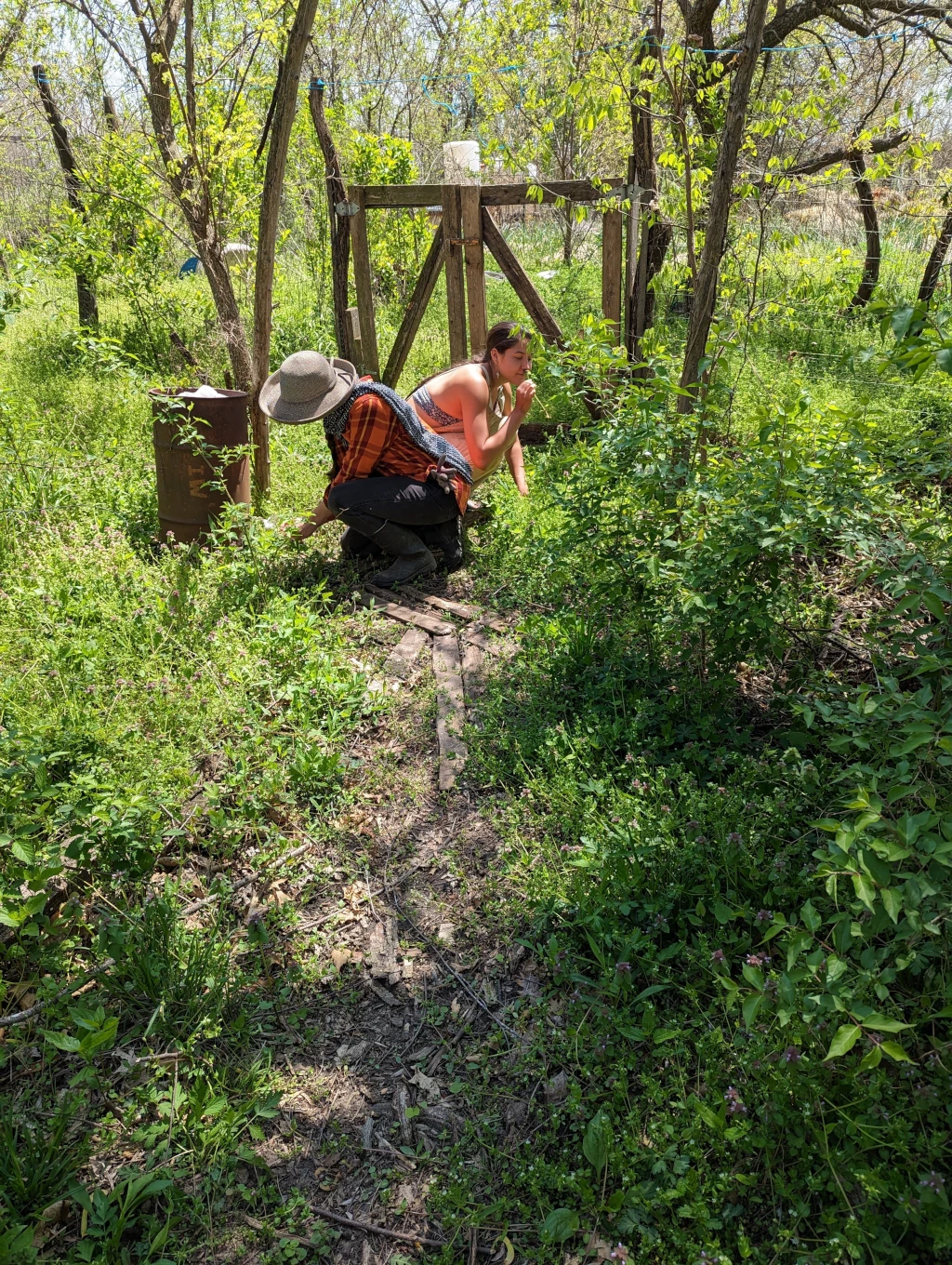Our Part in Land Stewardship: A Dancing Rabbit Update
Published: Tue, 05/23/23

Our Part in Land Stewardship:
A Dancing Rabbit Update
Chirping. Cheeping. Chirruping. Hooting. Trilling. Peeping. Crowing. The roar of birdsong wakes me up at 6 a.m. – insistent, exultant, garbled. Emerging from my tent, I startle a gaggle of rollie pollies when I pick up my shoes. They scamper away into the woodwork like kids who’ve been up to something. The cool humidity is perfumed with chokecherry, iris, and blackberry flowers. As I start my walk up to the front of the village, a squirrel leaps off my tent platform and disappears into the young grasses that extend away in all directions, their stems linked by dewy spider webs. Life has returned to DR in all its sweet chaos; the biting, mating, stinging, singing hum of every nook being filled.
According to the Iowa Prairie Network, this region used to be as biologically diverse as some South American rainforests, and living on 280 acres of preserved land, I can believe it. The amount of aliveness borders on overwhelming; green on green on green. It’s funny how rural areas get the reputation of stillness and stagnation, when I feel like everything here is moving. The wind is shifting the leaves, the earthworms are tilling the soil; I can practically watch the bindweed grow.
Growing up in Colorado, the Midwest was considered a “fly over” region. A nothing place. An empty place. But emptiness is the opposite of my experience here. In its natural state, Missouri is a place of natural abundance. Lush insect and bird life fill the fields and woods; amphibians, reptiles, crustaceans, and fish team in the ponds, lakes, and rivers. Woodland mammals thrive here: raccoons, possums, moles, deer, coyotes, and of course, copious rabbits. The climate supports growing food in a way that the arid beauty of my home state cannot. It makes sense that this area was a center for plant domestication in the late Paleolithic Era. Ancient peoples cultivated marsh elder, squash, chenopod, and sunflower here, and more recently many Indigenous tribes including the Wazhazhe, Báxoje, Jíwere-Nút’achi, and the Illini Confederacy created lives here before their forced removal to reservations in lands now called Oklahoma, Nebraska, and Kansas.
What is our responsibility as inheritors of this land? The Iowa Prairie Network states that this region now resembles a desert in terms of its biodiversity. Overfarming has left its mark on our land even after 25 years of conservation work: depleted soil, a lack of old trees, encroaching invasive species. It feels like a good and important thing to preserve this place, to care for this place, just as it cares for us. In some ways, this community has been a quarter of a century project in regeneration. Every year, the forests grow a bit taller, the rotationally grazed cows and goats return some fertility to the soil, organic gardeners plant nitrogen fixing crops and add amendments to the soil. I feel so glad for the work that has been completed by the people before me. When I walk in the hand planted forest between Red Earth Farms and Dancing Rabbit I am overwhelmed by a certainty that a good thing has been done. But what of our colonial legacy? What is our responsibility to the living descendants of those who were taken from their homelands? This is a more complicated question which I, and others in the community, continue to grapple with.
 |
Emeshe Amade has joined our rotation of newsletter writers, with her vivid and entertaining perspective on life at DR. Welcome, Emeshe! She has various roles at our nonprofit and works on the SubHub crew, a natural building project. |
Dancing Rabbit Ecovillage, 1 Dancing Rabbit Lane, Rutledge, MO 63563, USA
Unsubscribe | Change Subscriber Options






